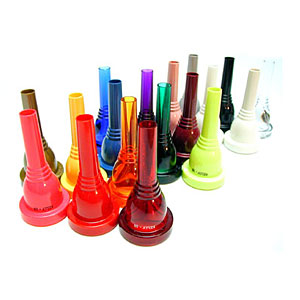Usmle World 2010 Download Pdf
'Step 1' redirects here. For the album by Jimmy McGriff, see.The USMLE Step 1 (more commonly just Step 1 or colloquially, The Boards) is the first part of the.
It aims to assess whether medical school students or graduates can apply important concepts of the foundational sciences fundamental to the practice of medicine. US medical students who wish to seek licensure to practice medicine in the US, typically take Step 1 at the end of the second year of medical school. Graduates of international medical schools (i.e., those outside the US or Canada) must also take Step 1 if they want to practise in the US. Graduates from international medical schools must apply through, and the registration fee is $915. For 2019, the registration fee for the test is $630, with additional charges for applicants who choose a testing region outside the United States or Canada.

Contents.History Prior to 1992, the NBME Part I examination served as the staple basic science examination for medical students at the end of their second year. Upon the launch of the three-part, NBME Part I exam was carried forward in its new format, the USMLE Step 1 examination, which has since evolved to become an increasingly clinically-applied examination of the foundational sciences.
The exam became computer based several years later. In May 2015, the USMLE began emphasizing of concepts regarding patient safety and quality improvement across all parts of the USMLE exam series, including Step 1.While the USMLE Step 1 has traditionally been taken after students complete foundational sciences and before core, in recent years a number of medical schools have reformed their medical school curriculum, moving to having students take the USMLE Step 1 after core clinical clerkships or preliminary clinical training. Top allopathic medical schools such as, at, at the University of Iowa and have instituted these changes, requiring completion of the exam in the third year of medical school. Format The exam is currently an eight-hour computer-based test taken in a single-day, composed of seven 40-question sections with a maximum 280 multiple-choice questions. One hour is provided for each section, allotting an average of a minute and thirty seconds to answer each question.

Between test sections, the test taker is allotted a cumulative 45 minutes (during the test day) for personal breaks. (There is a 15-minute tutorial at the beginning of the exam, which the test-taker can choose to skip and have that time added to break time.) If the taker finishes any section before the allotted one hour time limit, the unused time is added to the break time total.
The test is administered at any of several computer testing sites.Subjects Step 1 is designed to test the knowledge learned during the basic science years of medical school as applied in the form of clinical vignettes. This includes, and, as well as to interdisciplinary areas including, and molecular and., and questions on are also emphasized. Each exam is dynamically generated for each test taker; while the general proportion of questions derived from a particular subject is the same, some test takers report that certain subjects are either emphasized or deemphasized.Scoring Currently, students receive a three-digit score following sitting for the Step 1 examination. In 1999, the USMLE phased out the use of a -based system in favor of a three-digit and two-digit scaled scoring system.
In October 2011, two-digit scaled scores were no longer reported to any parties besides the examinees. In April 2013, the two-digit score was eliminated completely from the score report.While the USMLE program does not disclose how the three-digit score is calculated, Step 1 scores theoretically range from 1 to 300, most examinees score in the range of 140 to 260, the passing score is 194 and the national mean and standard deviation are approximately 229 and 20, respectively. Rise in the national mean Step 1 score has been observed with time, as shown in the table below. According to the National Resident Matching Program, the mean score for U.S. Allopathic seniors who matched to residency programs in 2016 was 233.2 (sd = 17.4). National Step 1 means among US and Canadian first time test-takers by year YearMean ScoreStandard Deviation3Effect on residency matching The USMLE score is one of many factors considered by residency programs in selecting applicants.
Usmle World App Download
The median USMLE Step 1 scores for graduates of U.S. Medical Schools for various residencies are charted in Chart 6 on page 9 of 'Charting Outcomes in the Match' available throughMany residency programs use a 'cutoff' score for Step 1, below which applicants are unlikely to be considered, although in some cases individuals with significantly higher Step 2 CK scores may still receive further consideration. The NRMP Residency Program Director survey contains more information, both overall and by specialty, regarding 'cutoff' scores (i.e., scores below which programs generally do not grant interviews). See also.References.

Microsoft Word 2010 is the second new version of Word since Word 2003. The first was Word 2007. These recent new versions have brought many useful new features to the program along with important changes to the user interface that were designed to improve access to all of Word's wide range of features.The new Office Fluent user interface in Word 2010 looks much different than the user interface in Word 2003. Menus and toolbars have been replaced by the Ribbon and the Backstage View.
Usmle Books Free Download Pdf
For those new to Word, the interface is very intuitive. For more experienced Word users, the interface requires some relearning. The benefit of the Office Fluent user interface is that it makes it easier to get more out of Microsoft Office applications so you can deliver better results faster.Word 2010 provides an array of new and improved tools that help you look like a design pro and make your important content stand out.